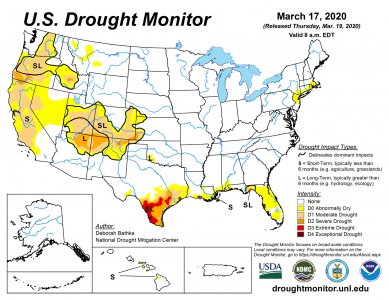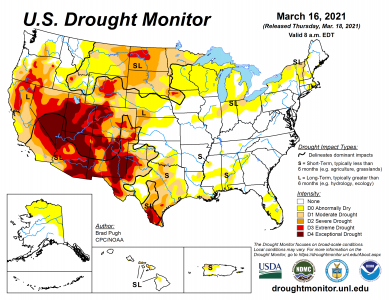mncowboy
Well-known member
Just looking at the drought monitor and was wondering how long until you see herds start to liquidate faster than normal (like 2012)? I imagine when it starts it'll flood the market with cheap beef but in the longer term, maybe there will be a stronger upswing in the feeder market and bred market?




